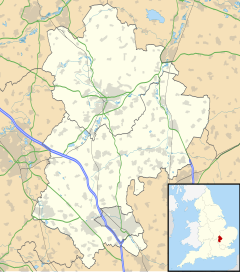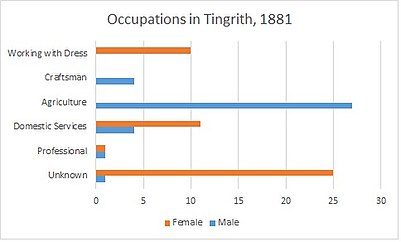Tingrith
| Tingrith | |
|---|---|
 Church of St Nicholas, Tingrith |
|
| Tingrith shown within Bedfordshire | |
| Population | 153 (2011) |
| OS grid reference | TL006813 |
| Civil parish |
|
| Unitary authority | |
| Shire county | |
| Ceremonial county | |
| Region | |
| Country | England |
| Sovereign state | United Kingdom |
| Post town | MILTON KEYNES |
| Postcode district | MK |
| Dialling code | 01525 |
| Police | Bedfordshire |
| Fire | Bedfordshire and Luton |
| Ambulance | East of England |
| EU Parliament | East of England |
| UK Parliament | |
Tingrith is a small village and civil parish in Bedfordshire, England. It is located adjacent to the M1 motorway near the large village of Toddington. The nearest major town is Luton, located about 10 miles (16 km) to the southeast. The parish church of St Nicholas dates back to the 13th century and has Tingrith's only cemetery. The church can seat up to 200 people.
Tingrith has a population of 153 people – a ratio of 78:75 males to females, according to the 2011 census.
Tingrith is mentioned in the Domesday Book; the entry states Tingrei: Thorgils from Nigel d'Aubigny
In the 1870s, Tingrith was described as:
A parish in Woburn district, Beds; 4 miles E of Woburn, and 4½ SE of Ridgmount r. station. Real property, £1,450. Pop., 226. Houses, 38. The living is a rectory in the diocese of Ely. Value, £240.* Patrons, Misses Trevor. The church is chiefly later English.
In the past, the most common occupation for males over the age of 20 in Tingrith was agricultural labour; in 1831 70% of males over the age of 20 were working in agriculture. Other popular occupations during this time were: farmers employing labourers, retail, professionals and servants. In 1881 agricultural work was still very popular in the Tingrith area, with 64% of males working in agriculture. Although information for male occupations was well recorded, 50% of female occupations were unknown in 1881. Of the female occupations that were recorded in 1881, the most common were for women to work in the domestic services or offices or working with dress. As 84% of the occupations were labourers or servants in 1831, it can interpreted that Tingrith at this time was a lower class area. Along with this, in 1831 only 11% of the population were employers or professionals.
...
Wikipedia



